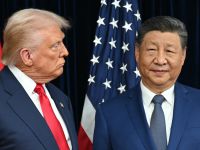Middle East Energy & Power Outlook 2025 by DataString Consulting

DataString Consulting presents a forward-looking review of how the Middle East is reshaping its position in the global energy and power landscape. The region has historically anchored global conventional energy supply, and it is now extending its leadership into renewables, modern grid systems, and low-carbon technologies, broadening its role in the future energy landscape. With global power demand rising at an unprecedented pace, Middle Eastern economies are accelerating investment strategies to strengthen energy security and capture emerging opportunities in the transition to cleaner systems.
Recent global trends reinforce the urgency behind these shifts. Globally, the electricity output surpassed 30,000 terawatt hours in 2024 and is expected to reach more than 35,000 terawatt hours by 2028. Additionally, capital expenditure across the wider energy and power ecosystem neared USD 2.5 trillion in 2024, with a significant majority channeled into solar, wind, storage, and power grid expansion. This momentum is influencing investment priorities across the Middle East, where governments and operators are aligning their strategies with future demand, long-term competitiveness, and national sustainability commitments.
Balancing Traditional Strength with New Energy Imperatives
The Middle East remains a critical anchor for global oil and gas supply, supported by advanced engineering capabilities and large-scale upstream programs. Saudi Arabia, UAE, and Qatar are accelerating investments, deploying digital oilfield systems, and scaling enhanced recovery technologies to lift efficiency and mitigate operational risk. In 2024, the MENA upstream sector invested around USD 60 billion in production projects, with these three markets driving the majority of spending.
Qatar’s LNG program has regained strategic weight as global markets recalibrate after the volatility of 2020 to 2023. To meet long-term demand and evolving energy security needs, Qatar has expanded its development plan for the world’s largest gas reservoir, targeting total LNG capacity of one 142 million tons annually by 2030. The new North Field West phase adds 16 million tons per year, further consolidating Qatar’s leadership in global LNG supply and elevating regional influence in energy markets.
Moreover, upstream spending by E&P companies globally surpassed USD 340 billion in 2024 and Middle Eastern NOCs remain among the most consistent contributors to this investment cycle. The region is also advancing the next wave of downstream development. Crude to Chemicals facilities, a major innovation championed across the GCC, are improving profitability by converting a larger portion of crude into high-value chemical products.
Accelerating the Shift Toward Renewable and Low-Carbon Systems
Senior Industry Consultants of DataString Consulting observe strong acceleration in renewable and low-carbon investments across the Middle East. Moreover, the national strategies are driving deployment of large-scale solar complexes, wind projects, carbon capture hubs, and early-stage hydrogen ventures. The region’s natural advantages such as high solar potential and vast available land position these initiatives for long-term global competitiveness.
Global renewable technologies are advancing quickly. Turbine capacities have exceeded 15 megawatts, and new generation models expected in the next decade will reach 20 megawatts. Countries across the Middle East are expanding port capacity, fabrication capabilities, and transmission infrastructure to support the development and integration of renewable power at utility scale. Energy storage initiatives are gaining similar traction, with governments evaluating battery systems, pumped hydro options, and hybrid storage solutions to strengthen grid reliability.
Power Infrastructure: Foundational to Economic Transformation
Electricity grid expansion has become a high-growth segment as investment rebounded in 2021 and continues to rise above 7% annually. The rapid scale-up of AI and cloud services is reshaping demand, with data center consumption set to grow above 12% CAGR through 2030 and reach nearly 945 terawatt hours. This surge is accelerating investment in new generation capacity, transmission corridors, smart grids, HVDC systems, and advanced storage.
For Middle Eastern nations, modern transmission and distribution systems are essential for industrial diversification, digital transformation, urban development, and renewable integration. Countries across the Gulf are accelerating upgrades that include intelligent substations, smart grid controls, cross-border interconnections, and high voltage corridors. These networks form the central platform for integrating data centers, EV charging infrastructure, and advanced industries into national planning.
Positioning the Middle East for the Next Energy Frontier
DataString Consulting views the Middle East as one of the most strategically positioned regions for the future of global energy. Its deep hydrocarbon expertise, strong project development capabilities, and accelerating renewable ambitions create a broad and resilient energy ecosystem. With rising investment in grids, hydrogen, CCUS, solar, wind, energy storage, and digital oilfield solutions, the region is advancing toward a more diversified and competitive energy future.
As global markets enter a new era of electrification and low-carbon innovation, the Middle East is emerging not only as a supplier of energy but as a key architect of the next generation energy system.






